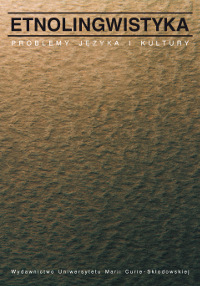Стереотип поляка в русской литературе XIX-XX вв.
THE STEREOTYPE OF A POLE IN THE RUSSIAN LITERATURĘ OF THE 19TH AND 20TH CENTURIES
Author(s): Elena E. LevkievskajaSubject(s): Language and Literature Studies
Published by: Wydawnictwo Naukowe Uniwersytetu Marii Curie-Sklodowskiej
Keywords: the stereotype of a Pole in Russian literature; the image of a Polish “master”; Pan- Slavism; the change of perspective; dignity; humanism; resistance against oppression
Summary/Abstract: It is claimed that the relationship of Russia towards Poland may be described with Catullus’s words: „I hate and love”. The hatred derives from the political struggle between the two countries, the memories of which on the Russian side go back to the wars of the 16th and 17th centuries, when the image of a Pole-enemy, a Polish arrogant, boastful and double-faced „master” took shape. In the 18th and 19th centuries, Russian patriotic poetry extolled the praises of Russian victories over Polish forces, especially those from 1795 and 1831. The reproach to the Polish pride, rebelliousness, instability, and alienation from their kin (i.e. Slavs) was based on political and theological premises, the former because these characteristics stood in opposition to the ideas of the Russian panslavism, the latter because they did not mat.ch the ideal of a humble Christian. In the 20th century there comes a change of perspective and re-evaluation of traditional characteristics: „Polish pride” begins to be seen as a manifestation of dignity, inextricably linked with human nature(in the poems of Marina Tsvetayeva), whereas Polish rebelliousness and reluctance to submission as the ability to adamantly resist force (in the poems of David Samoylov). What changed were not the characteristics themselves but their valuation.
Journal: Etnolingwistyka. Problemy Języka I Kultury
- Issue Year: 14/2002
- Issue No: 14
- Page Range: 93-104
- Page Count: 12
- Language: Russian

